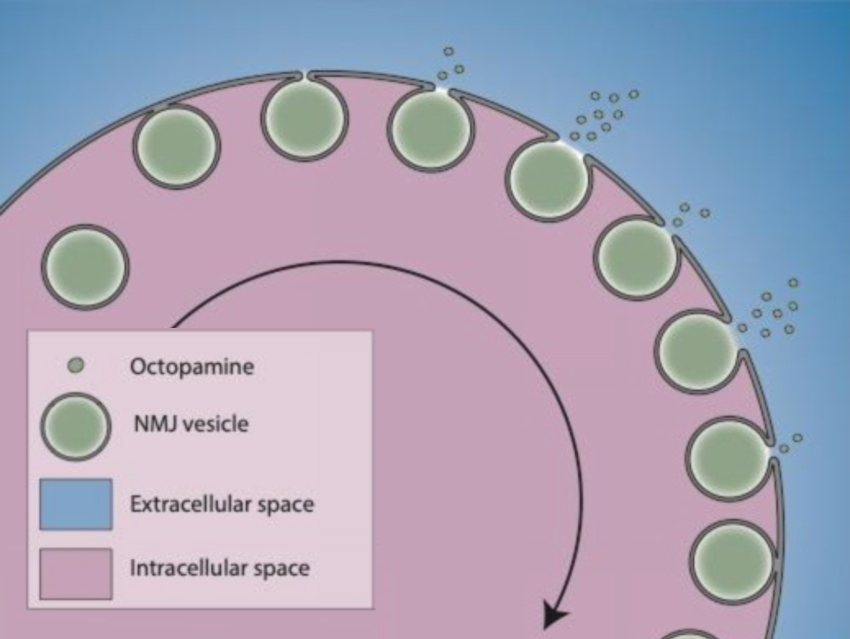Exocytosis is a process in which a cell transports molecules out of the cell in vesicles. These vesicles are carried to the cell membrane, where their contents are released into the extracellular environment. There is a 70-year old concept put forward by Bernard Katz that claims that the exocytosis of molecules from neurons is an “all-or-none” process. Recent research, however, has shown that this concept is suspect and that only part of the chemical load of vesicles might be released during exocytosis.
Christian Amatore, CNRS, Ecole Normale Superieure, Paris, France, and Xiamen University, China, Andrew G. Ewing, University of Gothenburg, Sweden, and colleagues have used electrochemical quantification to compare the amounts of molecules released during exocytosis and the molecular content of vesicles in living neurons of fruit flies. The team used an amperometric technique to quantify the amount of the neurotransmitter octopamine in the neuromuscular neurons of fly larvae. The technique, called intracellular vesicle impact electrochemical cytometry (IVIEC), uses a tiny, needle-shaped carbon-fiber electrode to pierce the plasma membrane of a single cell and access the vesicles.
The fraction of molecules released from a vesicle during an exocytosis event proved to be very small, i.e., 5–11 %. A theoretical model used to calculate the number of molecules in each vesicle verifies this discovery. The number of molecules released in partial exocytosis could be fine-tuned, in contrast to an all-or-nothing process. This leads to a possible new way to understand the ability of synapses, i.e., the connection between neurons, to change over time.
- Intracellular Electrochemical Nanomeasurements Reveal that Exocytosis of Molecules at Living Neurons is Subquantal and Complex,
Anna Larsson, Soodabeh Majdi, Alexander Oleinick, Irina Svir, Christian Amatore, Andrew G. Ewing,
Angew. Chem. Int. Ed. 2020.
https://doi.org/10.1002/anie.201914564



